CLICK ON the images below to download high resolution pdf versions of illustrations for the article Dynamics of Protoplanetary Disks (Philip J. Armitage, Annual Review of Astronomy and Astrophysics, 2011). These are unedited figures: you are free to use them in presentations etc.
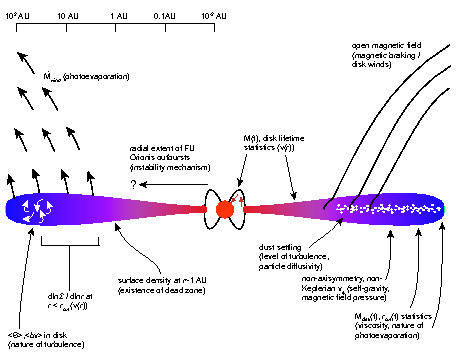
Illustration depicting some of the connections between observations of protoplanetary disks, and theoretical understanding of disk dynamics.
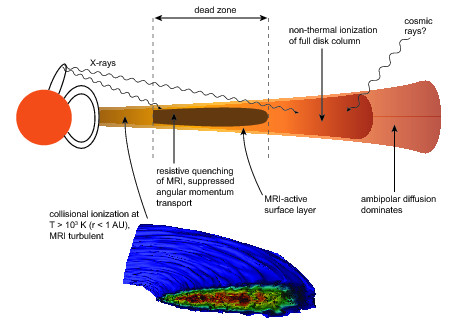
Illustration of the structure of the protoplanetary disk when a magnetically inactive "dead zone" is present (adapted from Gammie (1996), but following the modern consensus that X-rays are probably the dominant non-thermal ionization source). Inset: global simulation of a magnetically active disk from Beckwith, Armitage and Simon (2011).
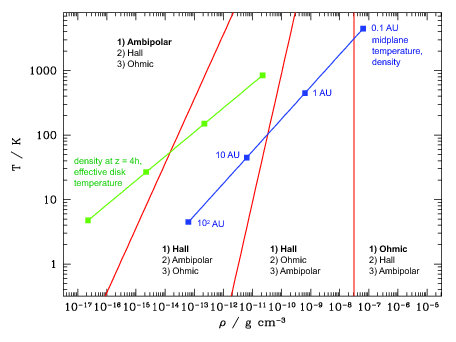
Plot showing the relative ordering of non-ideal MHD terms in the density / temperature plane, along with approximate tracks showing how conditions vary with radius at the midplane (blue) and in the atmosphere (green) of protoplanetary disks. Based on Kunz and Balbus (2004).
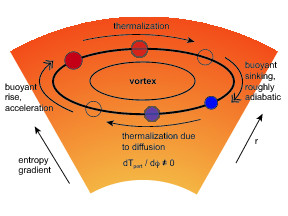
Illustration of the physics underlying the subcritical baroclinic instability, based upon Petersen, Julien and Stewart (2007) and Lesur and Papaloizou (2010).
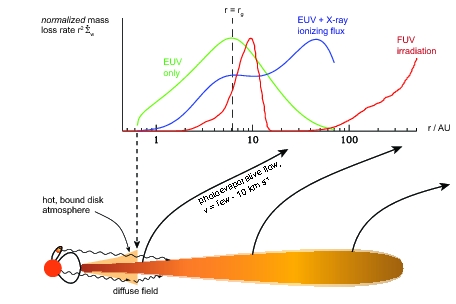
Illustration of disk photoevaporation by EUV, FUV and X-ray radiation from the central star. The predicted mass loss profiles are based upon calculations by Font et al. (2004) (EUV), by Gorti, Dullemond & Hollenbach (2009) (FUV), and by Owen et al. (2010) (X-ray), but are here normalized to show only the relative weighting of the mass loss with radius rather than the absolute value. Note that the calculations make varying approximations, and hence the comparison between models is best regarded as illustrative.
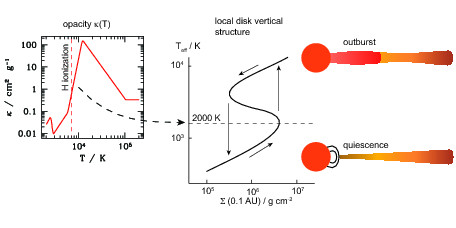
Illustration of the ingredients necessary for a classical disk thermal instability. A strongly temperature dependent opacity at T ~ 10,000K (left panel) results in local thermal equilibrium solutions that describe an "S-curve" in the plane of surface density vs effective temperature (middle panel). A global outburst in the inner disk (right panel) is then possible, depending upon how pronounced the multi-valued local behavior is, and upon how neighboring annuli are coupled together.